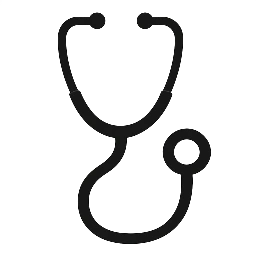Introduction “Instead, speaking the truth in love, we will grow to become in every respect the mature body of him who is the head, that is, Christ. From him the whole body, joined and held together by every supporting ligament, grows and builds itself up in love, as each part does its work.” (Ephesians 4:15-16, NIV)
Week 5 Overview
This week we will explore the foundations of Behavioral Therapy and Reality/Choice Therapy. The single most significant approach to therapy at present is Cognitive-Behavior Therapy. Along with Rational Emotive Behavior Therapy, we will be studying the approach that will be foundational in your therapy training. This model is currently the most researched approach, a major force behind evidence-based treatment, with over 2500 studies and counting. Likewise, Glasser’s “Reality/Choice Theory” plays a significant role in people’s daily lives as they make decisions causing both positive and negative consequences as they may lead to mental health issues.
Week 5 Tasks ● Discussion: Choice is Reality & Reality is Choice ● Essay: Cognitive Behaviors
Week 5 Readings
& Resources Week 5 Objectives
After successful completion of this week’s module, the student will be able to:
● Explain the philosophy and basic assumptions underlying Behavioral and Reality/Choice Therapies.
● Define and describe the key concepts of Behavioral and Reality/Choice Therapies and how they are incorporated into the therapeutic process.
● Analyze the strengths and the shortcoming of Behavioral and Reality/Choice Therapies.
● Describe and infer contemporary trends in Behavioral and Reality/Choice Therapies.
● Compare and contrast the role of the counselor when utilizing Behavioral and Reality/Choice Therapies.
● Explain the philosophy and basic assumptions underlying Cognitive-Behavioral Therapy.
● Define and describe the key concepts of Cognitive-Behavioral Therapy and how they are incorporated into the therapeutic process.
● Analyze the strengths and the shortcoming of Cognitive-Behavioral Therapy as applied to diverse populations.
● Develop self awareness of how theoretical models correspond with personal values and views on change.
Required Readings & Resources
Corey, G. (2024). Theory and practice of counseling and psychotherapy (11th ed.).
● Chapter 10: “Cognitive Behavioral Therapy”
● Chapter 11: “Choice Theory/Reality Therapy”
Theories of Counseling – Reality Therapy
Links to an external site.
Choice Theory by William Glasser
Links to an external site.
Theories of Counseling – Cognitive Therapy
Links to an external site.
Theories of Counseling – Rational Emotive Behavior Therapy
Links to an external site.
Gwen Therapy Video:
● Chapter 11: Choice Theory/Reality Therapy ● Links to an external site. ●
Part A-Discussion: Choice is Reality & Reality is Choice Review the Discussion Requirements for this course before responding to the prompt below.
Reality therapy is also based on choice theory. You cannot change or control others, and the only sensible approach to solving problems is to control yourself and your own behavior and thoughts. This helps the client make choices that work towards their life goals and move forward or past what is going on. Furthermore, it helps the client hold themselves accountable for their thoughts, actions, and behaviors giving them a sense of responsibility for themselves to move forward beyond their current struggles.
There is a difference between reality therapy and choice theory. Choice theory explains human behavior, whereas reality therapy serves as the delivery system. Sessions usually start with clinicians asking the client, “What do they hope will happen for them today?” or “What do they hope will happen during their time together today?”

Leave a Reply